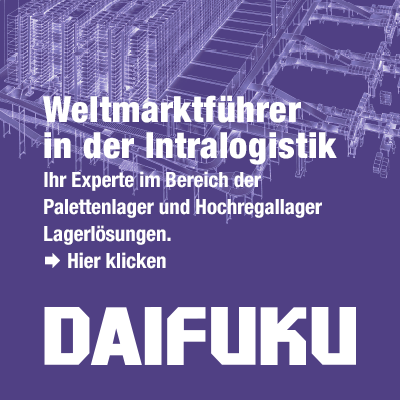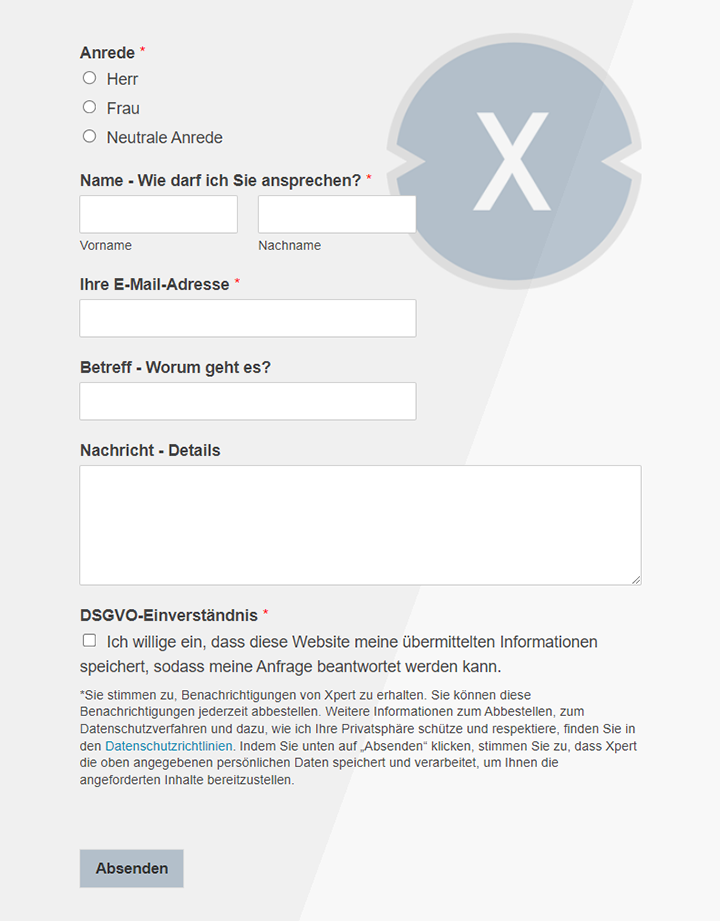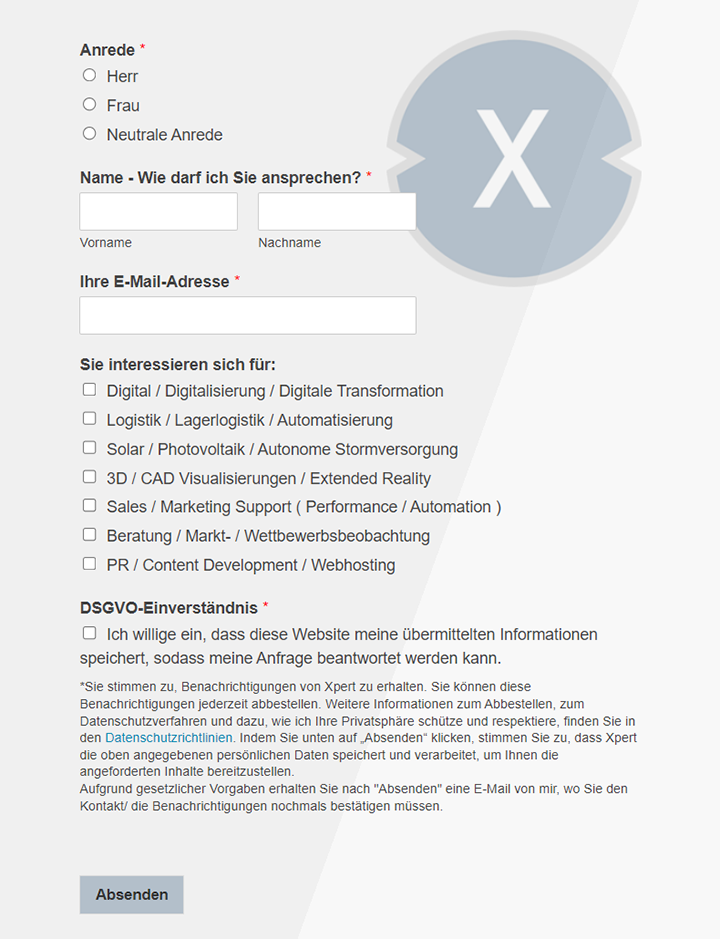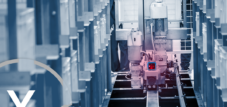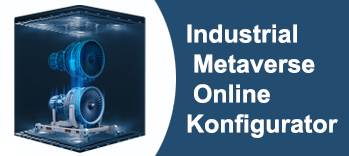Autonomous mobile robot (AMR): Global business development in Germany, Europe, Asia, USA and South America
Xpert pre-release
Language selection 📢
Published on: April 6, 2025 / update from: April 6, 2025 - Author: Konrad Wolfenstein

Autonomous mobile robot (AMR): Global business development in Germany, Europe, Asia, USA and South America - Image: Xpert.digital
The focus: how autonomous mobile robots transform the economy
Future of the economy: The key role of autonomous mobile robots
The global economy is currently experiencing a profound change that is promoted by the increasing integration of automation technologies. Autonomous mobile robots (AMR) are at the center of this development and revolutionize the way companies work in various industries. This report examines the current market situation, growth forecasts and the most important trends in five key regions: Germany, Europe, Asia, the USA and South America. The aim is to convey a comprehensive image of opportunities and challenges associated with the introduction of AMR technologies.
Suitable for:
- Autonomous mobile robots (AMR) and artificial intelligence (AI): cost reduction and efficiency boost in intralogistics
The global Amr market: an inventory
The global market for AMR is located in a phase of rapid growth. Current estimates indicate that the market exceeds a value of around $ 3 billion in 2024. This impressive number reflects the existing, strong demand for automation solutions. However, it is important to emphasize that the exact numbers can vary depending on the source, which is due to different definitions of the “AMR market” and different research methods. Some reports, for example, include autonomous forklifts, while others concentrate on robots with a lower payload that are used in warehousing.
Growth forecast: A look into the future
Regardless of the different estimates, there is a broad consensus that the AMR market will have considerable growth in the coming years. Forecasts for the average annual growth rate (CAGR) vary between 9.65 % and impressive 27.75 % by 2030. This indicates different degrees of optimism or different assumptions about the market drivers and acceptance rates. Some reports may take into account more outdoor amrs or assume different business forecasts that affect investments in automation.
The enormous differences in the forecast growth rates make it clear how complex and complex the AMR market is. It is important to understand that these forecasts are based on a variety of factors, including technological progress, economic conditions and regulatory framework. In order to make well -founded decisions, companies have to carefully analyze these factors and develop their own realistic expectations.
Main driver of market growth
Several key factors contribute to the rapid growth of the AMR market:
E-commerce boom
The exponential growth of e-commerce has led to an enormous increase in the order volume, which requires more efficient warehouse and logistics solutions. AMRs are able to automate material transport, accelerate order processing and optimize the inventory management.
Labor shortage
In many industries there is a persistent shortage of labor that forces companies to use automation technologies such as AMRS in order to compensate for the lack of personnel and increase productivity.
Industry 4.0
The increasing focus on operational efficiency, cost reduction and improved security in the context of Industry 4.0 initiatives is an important factor. AMRS enable companies to optimize their production processes and strengthen their competitiveness.
Technological progress
Continuous progress in core technologies such as artificial intelligence (AI), machine learning (ML) and highly developed sensor systems improve the skills and versatility of AMRS. This progress enables the robots to move autonomously in complex environments, to recognize and avoid obstacles and to carry out tasks precisely.
Robotics as-a-a-service (RAAS)
The advancement and increasing acceptance of the Robotics as-as-a-service (RAAS) business model reduce the initial investment barrier and make the AMR technology accessible to a wider spectrum of companies. RAAS enables companies to rent or lease AMR solutions instead of buying them, reducing the preliminary costs and increasing flexibility.
Government initiatives and investments
Supporting government policy and increasing investments in AI-controlled automation continue to drive market growth in several regions. Governments are increasingly recognizing the potential of AMRS to increase productivity, the creation of jobs and to strengthen competitiveness.
Suitable for:
- Intralogistics 4.0: From Amr to software - these technologies make warehouses really smart - and interoperable
AMR technology in Germany: A look at the market leader
Germany is one of the most important markets for industrial and mobile robotics in Europe. The country has strongly committed itself to the principles of Industry 4.0 and strives to digitize and automate its production processes. Germany has a high density of robots that are used in its industries, which underlines the established importance of automation in its economic landscape. In view of the local shortage of labor and an aging population, German companies are increasingly turning to AMRS to automate repeating, dangerous or physically exhausting tasks.
Acceptance rates in key industries
The logistics and warehouse sector in Germany is an important driver for the introduction of AMR. The automotive industry in Germany represents another important user of AMR technology, especially in applications such as assembly and welding. AMRS are used in the broader manufacturing sector to optimize the material flow, support just-in-time production processes and to improve overall efficiency. The healthcare system in Germany also begins to integrate AMRs for logistical tasks, including the transport of materials and samples within medical facilities.
Market size forecasts and key companies
The market for autonomous mobile robots in Germany is expected to reach $ 1 billion by 2034. The key companies in the German AMR landscape include Kuka Robotics, SEW-EURODRIVE, Still, EK Robotics, Magazino GmbH and Neobotix GmbH. These companies offer a wide range of AMR solutions for various industries and applications.
Xpert partner in warehouse planning and construction
Amr market: Innovation and growth at an overview
Amr market development in Europe: a heterogeneous picture
Europe holds the position of the most important shareholder in the global AMR market. The European market for autonomous mobile robots is located in a transformation phase, powered by the synergistic relationship between agile startups and established industrial actors. Germany, the United Kingdom and France, are the largest markets in Europe, with each country having its own special features and focus. While Germany is a leader in Europe with regard to the AMR volume, the United Kingdom is a particularly favorable market for investments in unmanned aircraft (UAVS) within the AMR category. France is the second largest e-commerce market in Europe, which drives the demand for AMRS in warehouse automation.
Suitable for:
- Daifuku Europe: Automation of intralogistics through autonomous mobile robots (AMR) and automated guided vehicle (AGV)
Areas of application and leading countries
Logistics and warehouse management are important areas of application for AMRs throughout Europe, driven by the need for increasing efficiency and automation in the supply chains. The production sector is also an important user and uses AMRS for material transport, assembly and other production -related tasks. The emerging areas of application include healthcare (for tasks such as medication and patient transport), retail (for inventory management and customer care) and even aerospace (for component transport). Germany, France, the United Kingdom, Italy and Spain are consistently identified as the leading countries on the European AMR market.
Well-known European AMR manufacturers
In addition to the German companies already mentioned, the other important European AMR players ABB (Switzerland), Mobile Industrial Robots (Mir) (Denmark), Agilox (Austria), Capra Robotics (Denmark) (Switzerland), PAL Robotics (Spain) and Robotnik (Spain).
AMR market expansion in Asia: the rise of the giant
The Asian-Pacific space is expected to have the highest CAGR in the forecast period. China dominates the AMR market in warehouse applications, followed by the USA. Overall, it is estimated that Asian countries will hold the largest share of the cake during the forecast period. Asia represents the most dynamic and fastest growing market for AMR technology worldwide. Initiatives such as “Made in China 2025” and similar state strategies across Asia actively promote the introduction of advanced technologies such as AMRS.
Focus on important production centers
China's Amr market is growing rapidly, powered by its position as the world's largest production base. Japan is an important manufacturer of industrial robots, which indicates a strong basis for AMR development. South Korea and India also have quick growth in the introduction of AMRS.
Investments and acceptance drivers
In the Asian-Pacific area, considerable investments in transport and logistics systems are made, which facilitates the introduction of AMRS. The “Intelligent Manufacturing 2025” strategy in China offers political support for the AMR industry. The demand in the areas of logistics, e-commerce and medicine in Asia explodes. The capital market shows an increased interest in the AMR industry in Asia, with active financing activities. The spread of the e-commerce industry is an important driver in the Asian-Pacific area.
Outstanding Asian Amr company
Geekplus Technology Co., Ltd. (China) has developed into a leading AMR provider worldwide, with a significant market share and operations in numerous countries and industries. The Omron Corporation (Japan) is another important global player who offers a wide range of AMR solutions for manufacturing and other sectors. Other important Asian actors that make considerable progress in the AMR market include Forwardx Robotics (China), Hikrobot (China) and Rapyuta Robotics (Japan).
AMR technology in the USA: a mature market in change
The market for autonomous mobile robots in the USA is expected to grow significantly and reach $ 3.4 billion by 2034. North America, with the USA as the main component, is expected to hold a significant share in the global AMR market, driven by technological progress and increasing automation in various industries. The United States is a mature and rapidly growing market for AMR technology, which is characterized by a strong demand for automation and a lively ecosystem of manufacturers and users.
Dominant industries and important competitors
The logistics and warehouse sector is a main user of AMRS in the USA and uses them for inventory management, order processing and general operational increases in efficiency. The booming e-commerce sector in the USA is an important catalyst for the Amr introduction, since companies strive to meet the rising consumer requirements after faster delivery times and optimized processes. The most important actors on the US AMR market include Locus Robotics, Invia Robotics, Amazon Robotics, Fetch Robotics (now part of Zebra Technologies) and Greyorange. The Robotics-as-A-A-Service (RAAS) model is becoming more important for US AMR providers and offers companies flexible and inexpensive solutions.
Amr market analysis in South America: an emerging market
The South American market for autonomous mobile robots was estimated at $ 9.94 million in 2022 and is expected to achieve $ 50.06 million by 2030, which corresponds to a significant CAGR of 22.4 %. Brazil is expected to make the largest contribution contribution. Mexico held the largest market share in the region in 2023. The South American Amr market is currently small, but has a considerable growth potential with strong double-digit CAGR forecasts.
Suitable for:
- Hundreds of robots automate warehouses in Georgia/USA - UA 450 EXOTEC warehouse robots - several large -scale projects
Challenges and opportunities
South American countries generally have introduced new technologies more slowly than other regions. However, the increasing demand for automated systems drives market growth. The increasing labor costs and a growing need for improved operational efficiency also contribute to the introduction of AMR technology in the region. The production sector in South America is increasingly taking over Industry 4.0 practices, which include the integration of AMRS to optimize production processes. A lack of specialists in the region also leads companies to check robot solutions for business continuity. The most important challenges for market growth in South America include the high initial investment costs related to the AMR introduction and potential technical difficulties.
Emerging actors and market dynamics
The takeover of Pollux, a Brazilian company that specializes in industrial robotics and automation, signals the growing interest of large players in the South American market by accenture. Geekplus, a global leading AMR provider, has expanded its presence in South America through a partnership with Körber Supply Chain, which is a strategic step of international companies to use the potential of the region. In cooperation with Geodis, Locus Robotics introduces the next generation of warehouse automation with AMR in Mexico.
Key players who drive AMR development and introduction
The global AMR market is led by a mixture of established manufacturers of industrial robots and innovative, specialized AMR providers. The most important global companies that contribute to the further development and implementation of AMR technologies include ABB (Switzerland), KUKA AG (Germany), Omron Corporation (Japan), Geekplus Technology Co., Ltd. (China) and Mobile Industrial Robots (Mir) (Denmark).
Future trends and challenges
The future of AMR technology is largely shaped by the continued progress in artificial intelligence (AI) for improved navigation, object recognition and decision-making. Improved sensor technologies, including more sophisticated lidar systems and 3D cameras, will enable AMRs a more comprehensive and more precise understanding of their surroundings. Constant improvements in battery technology will lead to longer operating times and faster charging capabilities and thus improve the practicality and efficiency of AMR inserts. The increasing introduction of fleet management software and cloud-based platforms will enable better coordination, surveillance and optimization of large AMR inserts. The advent of mobile cobots that combine AMRS mobility with the collaborative skills of cobots will probably open up new applications in areas such as electronics and battery production.
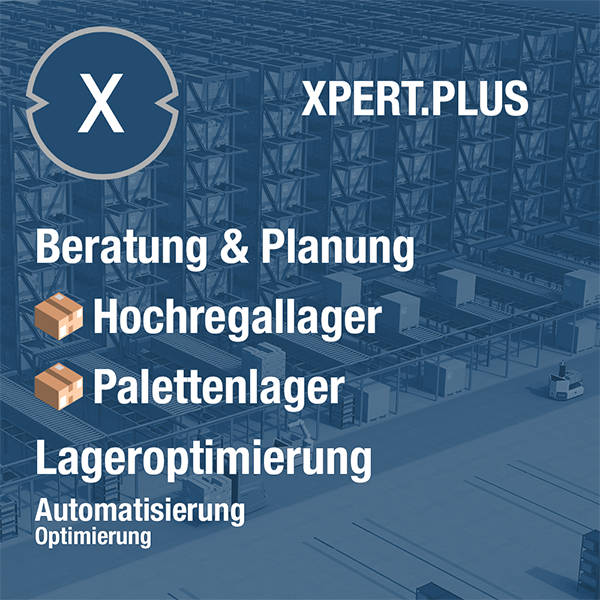
Xpert.Plus warehouse optimization - high-bay warehouses such as pallet warehouses consulting and planning
How regulatory standards can promote the acceptance of AMRS
Regulatory framework and market acceptance
The regulatory landscape for AMRS is developing, with new and updated security standards being introduced in different regions. The development and implementation of clear and comprehensive regulatory framework is crucial for the promotion of trust and guarantee the safe and responsible use of AMR technology. The high initial investment costs related to the AMR introduction can still be a considerable obstacle to acceptance, especially for small and medium-sized companies (SME). The seamless integration of AMR systems into existing warehouse management systems (WMS) and Enterprise Resource Planning (ERP) software can represent technical challenges. Concerns regarding data security, data protection and potential cyber security gaps in connection with networked AMR systems must be taken seriously and proactively addressed in order to maintain the trust of the users and the public. The structure of security protocols that meet strict industrial standards and the implementation of encryption techniques for sensitive data are essential.
At the same time, it is important to take into account the ethical implications of the increasing use of AMRS. This includes the effects on jobs, the need for transparent algorithms and the guarantee of fairness and non-discrimination against decisions made by AI-controlled robots. Only by coping with these regulatory, financial, technical, security-related and ethical challenges can the full transformative potential of AMR technology be exploited responsibly and sustainably. Cooperation between governments, industrial actors, research institutions and civil society is of crucial importance.
Suitable for:
- Driverless transport systems: What role do start-ups and industry play in AMR business development (autonomous mobile robots) in Europe?
AMR: Strategic recommendations
The global market for autonomous mobile robots (AMR) stands on the threshold of a substantial growth phase that is powered by a combination of technological progress, increasing demand from various industries and the increasing need for efficient automation solutions. The analysis of the five key regions - Germany, Europe (overall), Asia, USA and South America - has shown significant differences in terms of market maturity, acceptance factors and competitive landscape.
Regional differences and opportunities
Asia: The center of growth
The Asian-Pacific space is expected to record the highest growth rate and develop into the largest AMR market. China's dominant role in production and e-commerce drives demand, while state initiatives such as “Made in China 2025” actively promote the introduction of AMR.
North America and Europe: Mature and important markets
The USA and Europe represent mature markets with an established automation infrastructure. The high labor costs and the focus on efficiency in logistics, e-commerce and manufacturing sectors contribute to the continuous acceptance of AMR.
South America: an emerging market with potential
Despite its currently lower size, South America offers a high growth potential. Increasing labor costs, a growing need for operational efficiency and the takeover of Industry 4.0 practices create opportunities for the Amr introduction. However, challenges such as high investment costs and technical integration difficulties must be mastered.
Strategic recommendations for stakeholders
In view of the dynamic nature of the global AMR market, stakeholders should take into account the following strategic recommendations:
- Regional differentiation: Recognize the regional differences in terms of market maturity, acceptance drivers and competitive landscapes. Develop tailor -made strategies that are tailored to the specific needs and challenges of each region.
- Investment in technology and innovation: focus on the development and integration of advanced technologies such as AI, mechanical learning and sensors to continuously improve the skills and the versatility of AMR solutions.
- Cost reduction and accessibility: Work on the reduction in initial investment costs to make AMR technology more accessible to small and medium-sized companies (SMEs). The Robotics-as-a-A-Service (RAAS) model can be a practical solution to tackle this challenge.
- Integration and interoperability: Make the seamless integration of AMR systems into existing warehouse management systems (WMS), Enterprise Resource Planning (ERP) software and other automation technologies. Promote the development of open standards and protocols to improve the interoperability between different AMR platforms.
- Qualification of workers: Invest in training programs and initiatives to qualify workers to remedy the lack of specialist staff for the company, maintenance and programming of AMR systems. This will accelerate acceptance and ensure the successful use of AMR in various industries.
- Data security and cyber security: Implement robust security measures to ensure data security and cyber security in connection with networked AMR systems. This is crucial to gain the trust of the users and reduce potential risks.
- Ethical considerations and responsible commitment: Promote the ethical and lawful use of AMRS and develop clear guidelines and training programs to ensure that technology is used responsibly and in accordance with social values.
- Observation of the regulatory landscape: Observe the developing regulatory framework in every target region to ensure compliance with security standards and regulations. Work with government agencies and industry associations to develop clear and comprehensive guidelines for the use of AMR.
Suitable for:
How companies can maximize their competitiveness in the AMR market
The global AMR market offers enormous opportunities for companies that increase their operational efficiency, reduce costs and strengthen their competitiveness. In order to be successful, however, stakeholders have to understand the regional differences, invest in technology and innovation, reduce costs, ensure interoperability, qualify workers, ensure data security, take into account ethical considerations and to closely observe the regulatory landscape. By implementing these strategic recommendations, stakeholders can exploit the full potential of the AMR market and play a leading role in the design of the future of automation.
Recommendations for further analyzes for the use of AMR
In order to make well-founded decisions and to be successful on the rapidly developing AMR market, another examination of the following areas is recommended:
Specific areas of application
Perform detailed analyzes of specific areas of application from AMR in various industries in order to better understand the potential advantages and challenges.
Emerging technologies
Examine emerging technologies in connection with AMR, such as B. mobile cobots, AI-controlled navigation and advanced sensors to identify new opportunities and potential disruptive forces.
Case studies and best practices
Analyze case studies and best practices from companies that have successfully used AMR to gain valuable knowledge and implementable strategies.
Economic impact
Evaluate the economic effects of AMR introduction to various industries and regions, including the effects on employment, productivity and competitiveness.
Due to the continuous observation of the market and the implementation of further research, stakeholders can ensure that they are well positioned to benefit from the opportunities that the global AMR market offers, and at the same time minimize the potential risks.
We are there for you - advice - planning - implementation - project management
☑️ SME support in strategy, consulting, planning and implementation
☑️ Creation or realignment of the digital strategy and digitalization
☑️ Expansion and optimization of international sales processes
☑️ Global & Digital B2B trading platforms
☑️ Pioneer Business Development
I would be happy to serve as your personal advisor.
You can contact me by filling out the contact form below or simply call me on +49 89 89 674 804 (Munich) .
I'm looking forward to our joint project.
Xpert.Digital - Konrad Wolfenstein
Xpert.Digital is a hub for industry with a focus on digitalization, mechanical engineering, logistics/intralogistics and photovoltaics.
With our 360° business development solution, we support well-known companies from new business to after sales.
Market intelligence, smarketing, marketing automation, content development, PR, mail campaigns, personalized social media and lead nurturing are part of our digital tools.
You can find out more at: www.xpert.digital - www.xpert.solar - www.xpert.plus





